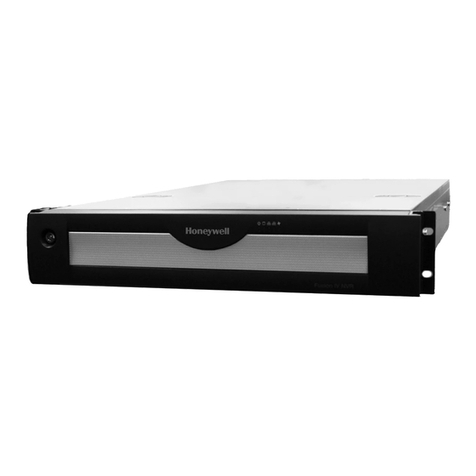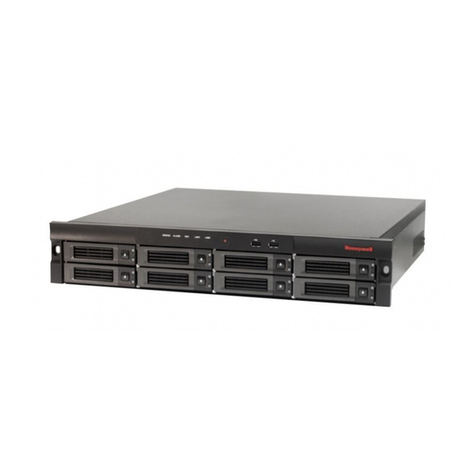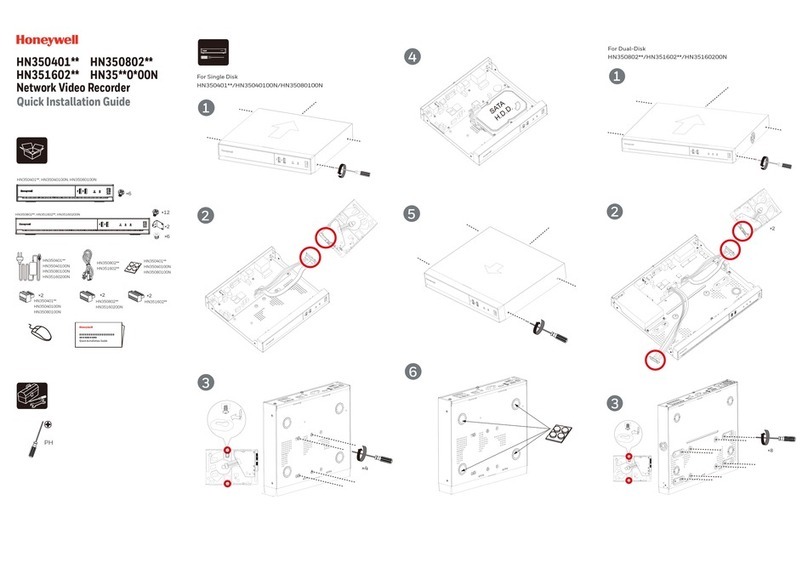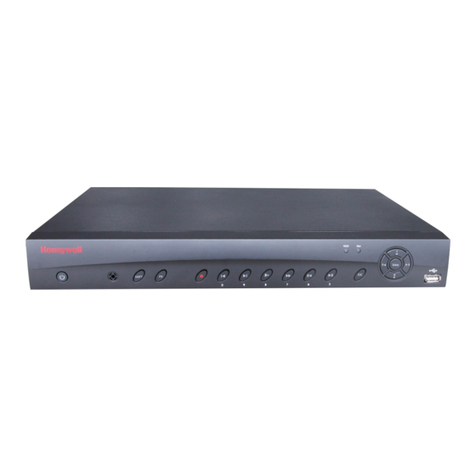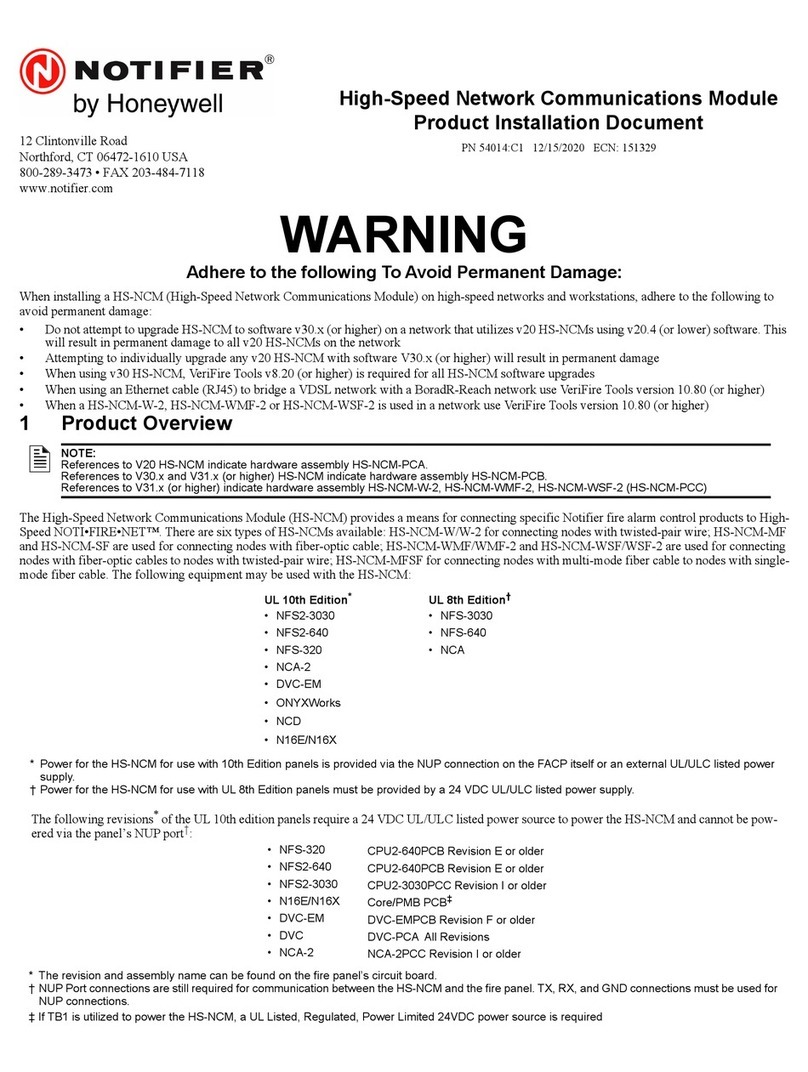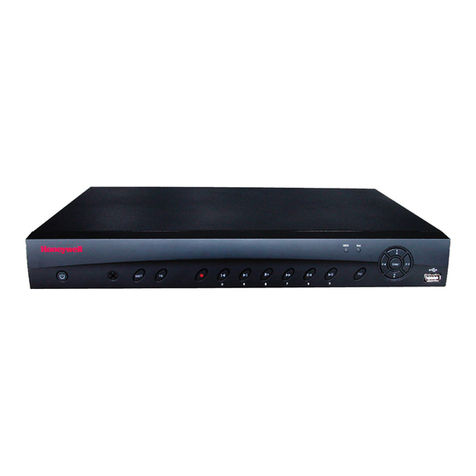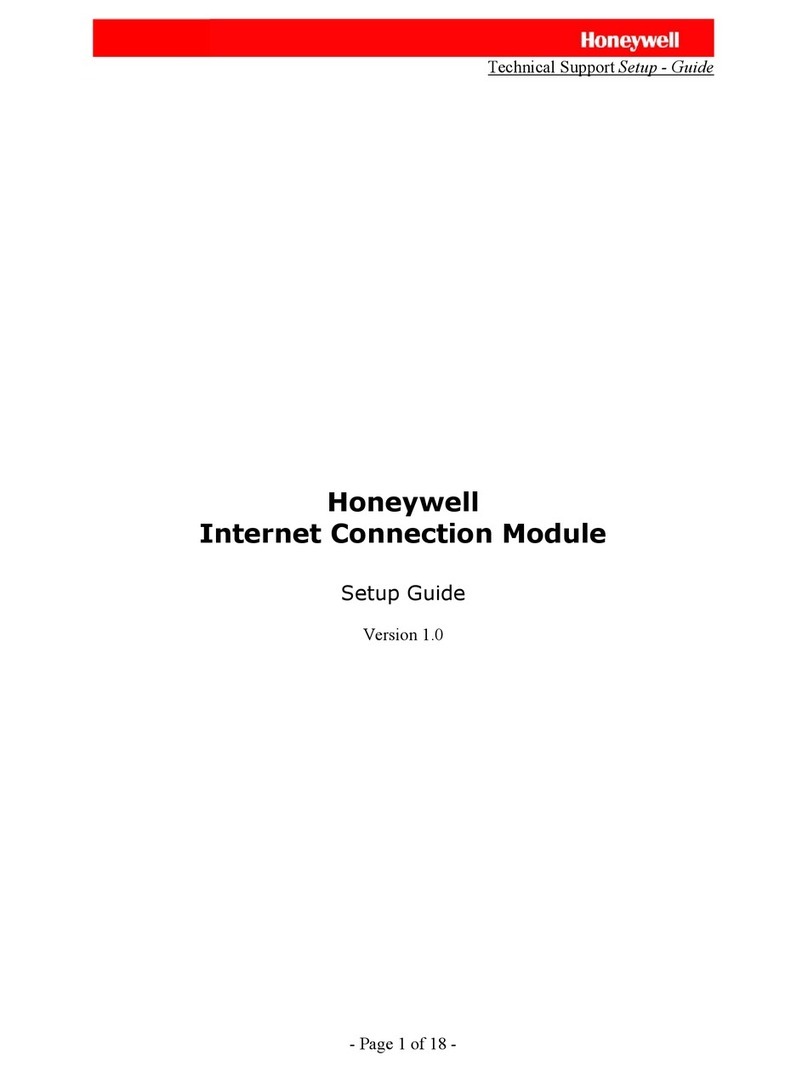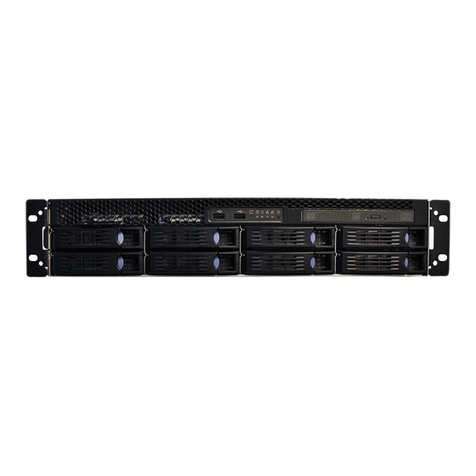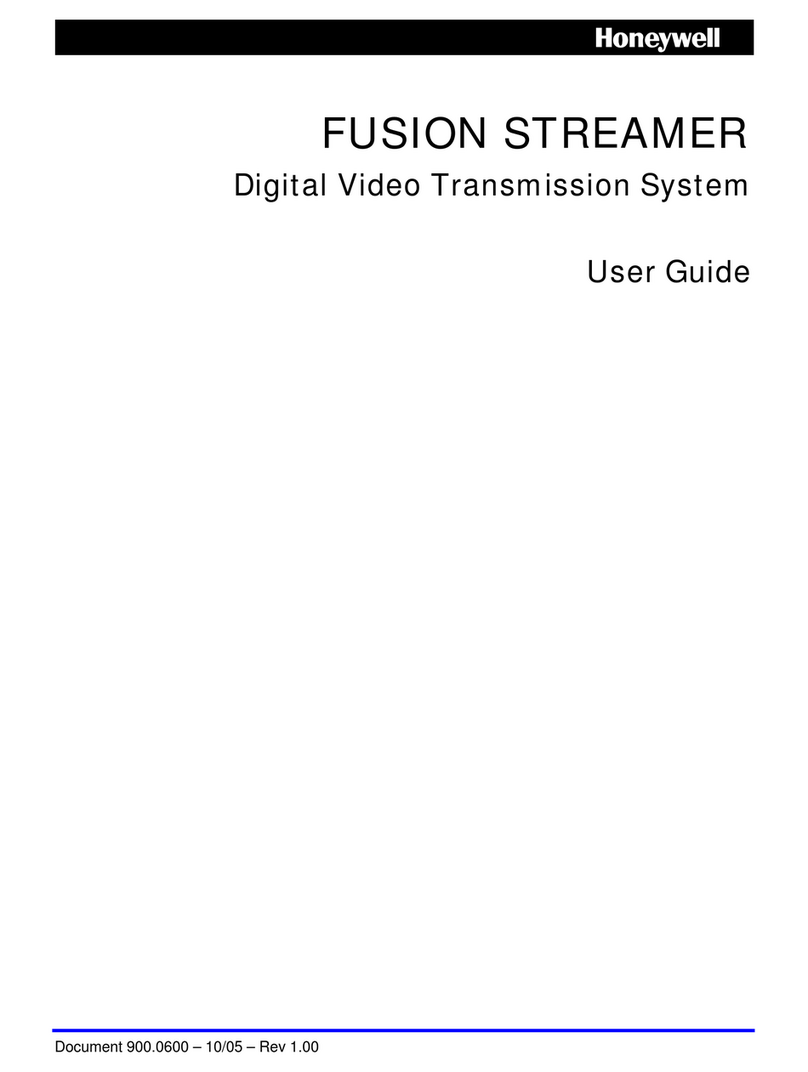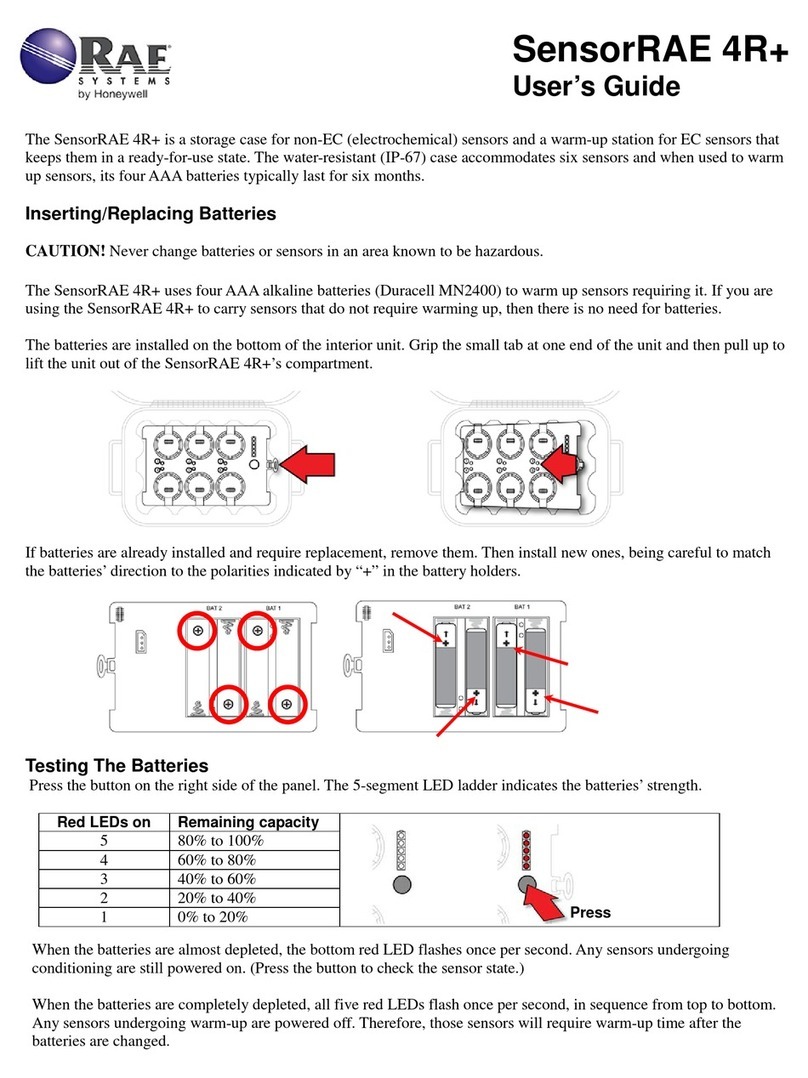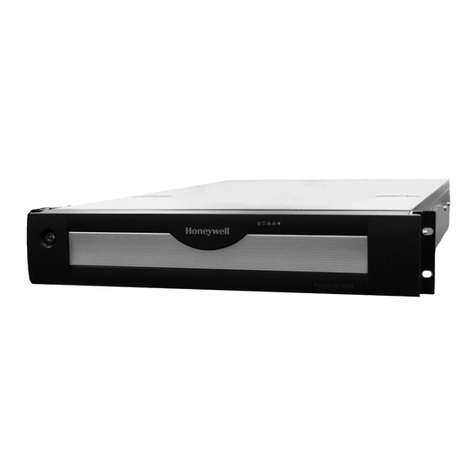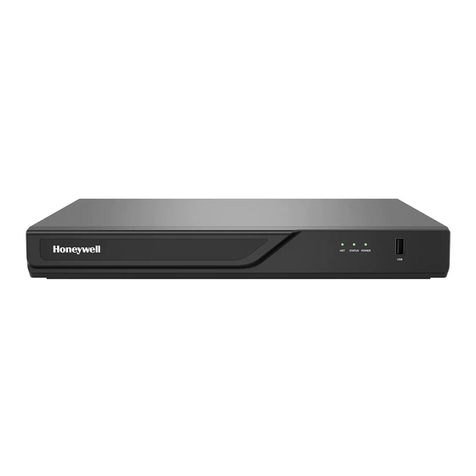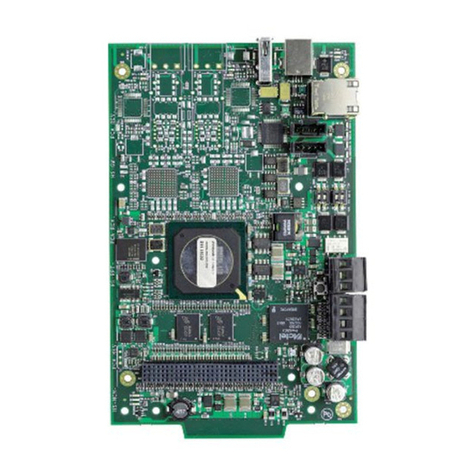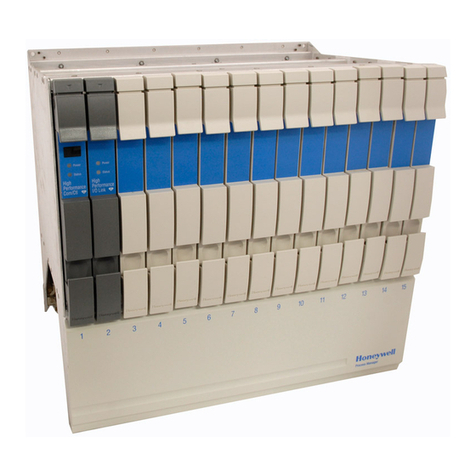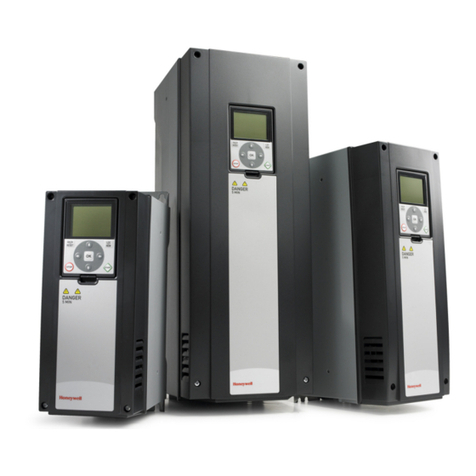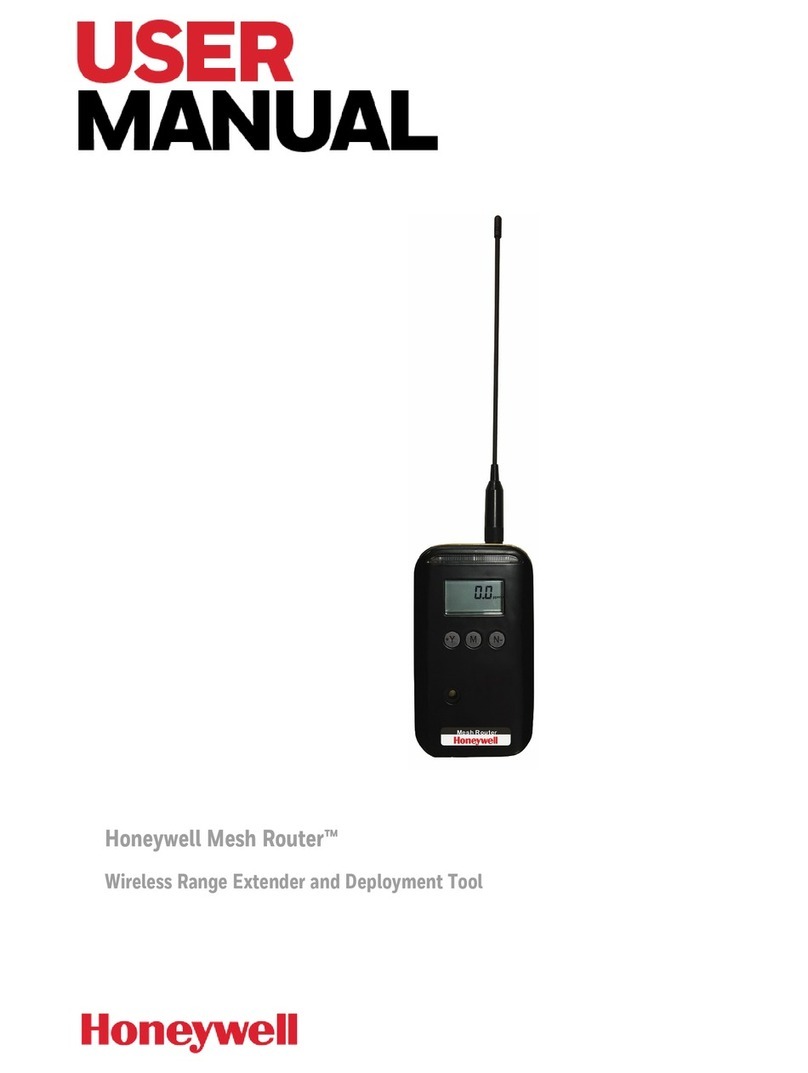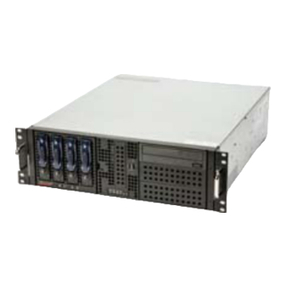
www.honeywellvideo.com
+1.800.323.4576 (North America only)
https://honeywellsystems.com/ss/techsupp/index.html
Document 800-14458 – Rev A – 04/2013
© 2013 Honeywell International Inc. All rights reserved. No part of this publication may be reproduced by any means without written
permission from Honeywell. The information in this publication is believed to be accurate in all respects. However, Honeywell cannot
assume responsibility for any consequences resulting from the use thereof. The information contained herein is subject to change
without notice. Revisions or new editions to this publication may be issued to incorporate such changes.
2 | MAXPRO®NVR SE Quick Install Guide
5 Honeywell IP Camera Configuration
Using the MAXPRO NVR Wizard (3 Clicks to Live Video)
Power up the MAXPRO NVR SE unit. When the Log On dialog box displays,
log on as Windows Administrator (Username: Administrator, Password:
Password1). The setup wizard starts automatically but may take two
minutes.
1. The CONFIGURATION dialog appears. When the network is ready
(network icon in Windows tray), click to accept the default
settings and proceed to CAMERA DISCOVERY.
To modify the settings for your unique system requirements, follow the
table below. After initial setup, you can do this in the MAXPRO NVR
client.
Click to reset the values without saving any changes.
2. The CAMERA DISCOVERY window appears. Each newly connected
camera is identified and an IP address is assigned to the camera by
the Wizard, after which the camera reboots.
It may take a few minutes before cameras are discovered and added.
You will see a Discovery in progress… indicator as well as a pop-up
message on the lower right of your monitor. The list disappears as the
cameras are added to the MAXPRO NVR.
Click only after all connected cameras are discovered and
added.
Click to return to the CONFIGURATION page.
3. The INSTALLATION window appears. Click to start the
MAXPRO NVR application (see 3 Live View).
Note To add non-Honeywell devices, see 7 Third Party Device
Configuration.
6 Live View
Log On to the MAXPRO NVR Viewer
1. As soon as you click in the Setup Wizard, the Log On dialog displays.
Please wait while the system logs you on automatically as a Windows Logged-In
User.
2. MAXPRO NVR launches and the Viewer tab displays (see below). The Devices
area on the left hand pane lists all the discovered network cameras.
View Live Video
To view video from cameras, double-click MAXPRO NVR in the Devices list to display video from all discovered cameras in
the Viewer. You can also highlight and drag each camera into a panel.
Field Description
Video Format NTSC, PAL
Start Recording Start recording as soon as the camera is
added in MAXPRO NVR.
Auto IP Assignment Software assigns IP address automatically.
Dynamic IP
Synchronization
Software synchronizes any change in a
device’s IP address.
Auto Add
Discovered Camera
Any newly connected device is automatically
added to the Devices list.
Custom Camera
Credentials
Not configurable in the Wizard.
Camera Type Not configurable in the Wizard.
Username,
Password
Not configurable in the Wizard.
Camera IP Range The system automatically detects all cameras
in this range on the network.
STEP 1 CONFIGURATION
STEP 2 CAMERA DISCOVERY
STEP 3 INSTALLATION
Pop-up
message
List of Honeywell IP cameras
connected to and discovered
by MAXPRO NVR.
Devices tab: currently active.
Alarms tab: acknowledge and
clear alarms.
Images/Clips: select images
and clips to view.
Double-click or drag the clip
to a Viewer panel to view.
To export a clip for forensics,
click the arrow
to switch to Full Timeline
mode, then click the Clip
Export.
Number of alarms detected
Timeline
Change
playing speed
Play in
reverse Pause
Play
forward
Select date and time
to start recording
Time jump control
to quickly locate
video
User currently logged on
7 Third Party Device Configuration
Non-Honeywell devices are configured using MAXPRO NVR. To set up cameras for video input:
1. Launch MAXPRO NVR. On the Configurator tab, click the Camera tab.
2. In the Discover cameras here area, click to discover the connected cameras in the subnet.
3. Click to add the device to the Camera list and ensure that the user name and password in the Advanced
Discovery Settings match the user name and password of the camera.
4. To change the default parameters of a camera, select it and then click next to Launch Web View For Advanced
Set Up to open the camera advanced settings pane where you can modify the settings as required.
5. Click Save for your new settings to take effect.
Note For detailed information on adding and configuring third party cameras that do not support automatic discovery,
please refer to the MAXPRO NVR Operator’s Guide.
8 Advanced Features
Note For more detailed information on the advanced features available in MAXPRO NVR SE, please refer to the
comprehensive guides available on your software/documentation DVD - UserManuals folder.
Configurator Tab Use the Configurator tab to configure video devices and set up your MAXPRO NVR SE system. The
Configurator tab consists of seven sub-tabs: System, Disk, Camera, Schedule, I/O, Sequence, User.
Search Tab Use the Search tab to search for recorded video (clips) or events.
1. Select the check box next to the camera(s) from which the video was recorded.
2. Select search conditions in the Date time filter, then click Search ().
9 MAXPRO NVR SE Default IP Addresses
Your MAXPRO NVR SE unit has one or two configured network ports with the following default static IP addresses:
•192.168.1.101 for LAN1 (Camera Network)
•172.25.254.101 for LAN2 (Client Workstation Network)
If more than one MAXPRO NVR SE unit is on the same network, it is recommended that you assign a unique IP address and
computer name to each unit (the default name is MAXPRO-NVR).
1. To change the IP address using Windows:
a. Click the network icon ( ) or ( )located next to the clock (lower right of screen), click Open Network and
Sharing Center, then click Change adapter settings.
b. Right click Camera Network or Client Workstation Network, and then select Properties.
c. Click Internet Protocol Version 4 (TCP/IPv4), then click Properties.
d. Click Use the following IP address, then in the IP address, Subnet mask, and Default gateway boxes, type the
IP address settings.
e. Click Use the following DNS server addresses, and then, in the Preferred DNS server and Alternate DNS
server boxes, type of the addresses of the primary and secondary DNS servers. This step is required when clients
connect through the Internet.
2. To change the computer name using Windows:
a. Click Start, right-click Computer, click Properties, click Advanced system settings, click the Computer Name
tab, and then click Change.
b. Under Computer name, delete the old computer name, type a new computer name, and then click OK. The
name cannot contain spaces or all numbers or any of the following characters: < > ; : " * + = \ | ?.
c. After changing the computer name, restart the computer.
d. Navigate to the C:\Program Files\Honeywell\MaxproNVR\TrinityFramework\bin folder, and then double-click
MaxproNVRMachineNameUtility.exe to open the MAXPRO NVR Utility.
e. The new computer name should automatically appear in the Machine Name field. If it does not, enter the name
manually. Click Update. The message Machine Name Updated successfully appears when the update is
complete.
More Information
Configurator tab sub-tabs:
System: Recording, email, holiday/exceptions for
schedules.
Disk: Hard drive storage capacity, partitioned.
C: reserved for operating system
D: where the data is stored
Camera: Discover and add network cameras, live camera
configuration, recording, video motion detection.
Schedule: Set recording schedules for recorded video.
I/O: Configure input and output for each camera.
Sequence: Select a sequence of cameras for live video.
User: Set user access and permission levels.
MAXPRO NVR SE Third Party Devices
Please refer to the appropriate user guide located on the
software/documentation DVD or on the Honeywell
product web site at
www.honeywellvideo.com.
A comprehensive list of all the third party devices
supported by MAXPRO NVR is available at Honeywell
Open Technology Alliance (HOTA)
www.security.honeywell.com/hota/.
